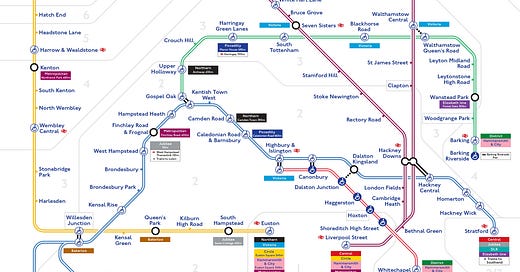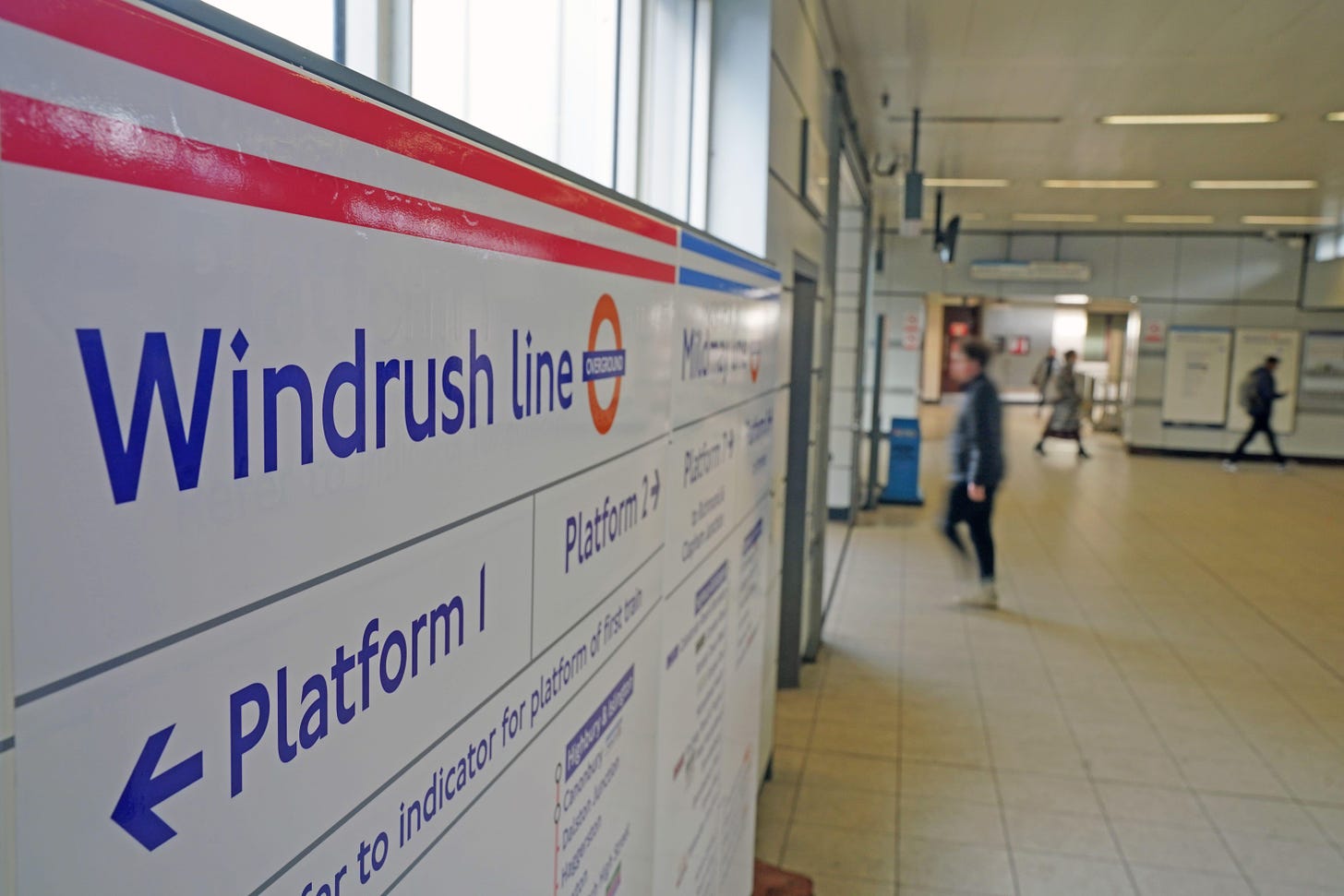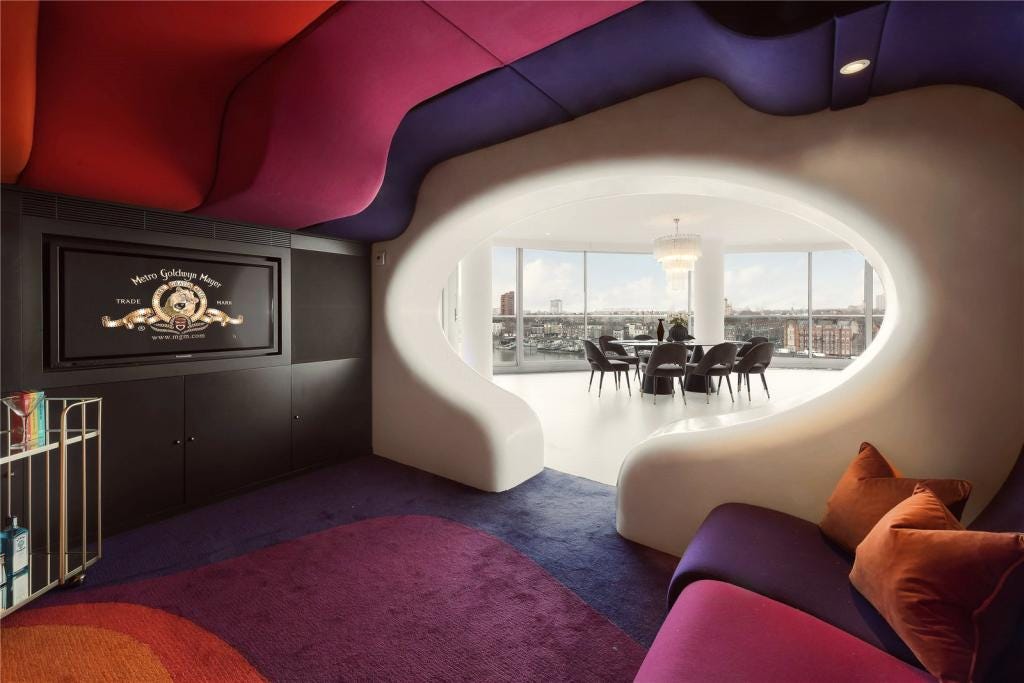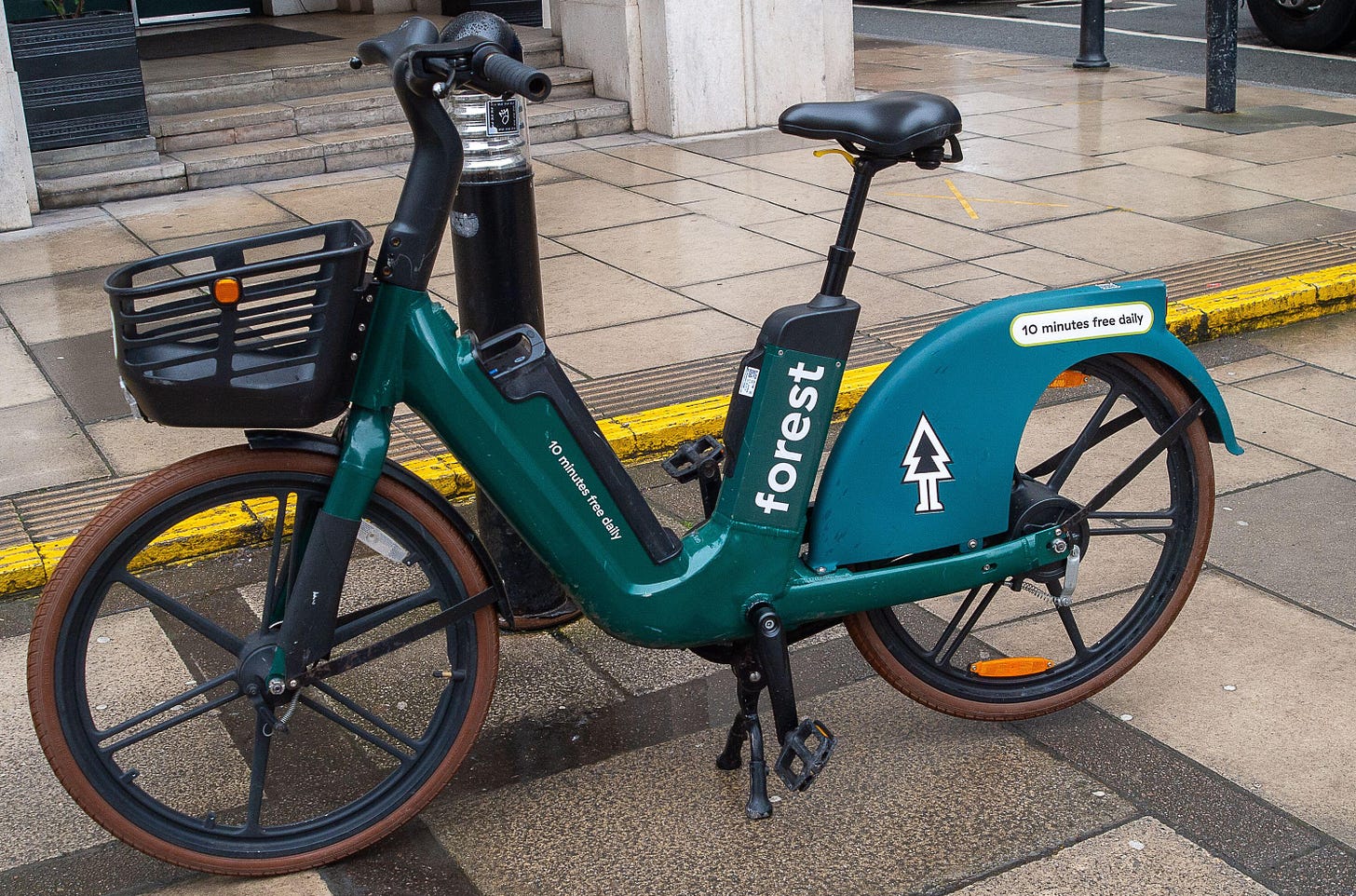The London Overground rebrand is finally happening
Plus: Scroll to the end for a preposterous penthouse flat, as well as an exclusive story about Forest e-bikes.
Welcome to London Centric, where we are still recovering from our launch party this week. The venue, a floating pub on the Thames on which we managed to pack out the lower deck, left some attendees unsure if they had over-indulged — or if the boat was just swaying a bit too much. Thank you to all the Assembly Members, MPs, City Hall officials, London journalists and friends of the outlet who made it along.
Particular thanks to all the London Centric founding members who were invited in recognition of their generosity in helping us get off the ground. If you would like to join us for similar events in future, please do consider subscribing.
Exclusive: The long-awaited renaming of the London Overground is finally due to start next Wednesday, according to an internal note to Transport for London staff seen by London Centric. The project to rebrand the entire service as six distinct lines has been in the works for years, and was a part of Sadiq Khan’s 2021 re-election manifesto. It was expected to go live in September only to be delayed by the giant TfL cyberattack.
But change is finally nigh. Metal signs featuring the new names have been appearing across the orbital network for months, with the new branding covered up. From next week those stickers will start to be removed and it’ll finally be time to say goodbye to the familiar London Overground orange and welcome to the parallel multi-coloured branding of the Liberty, Lioness, Mildmay, Suffragette, Weaver, and Windrush lines.
The Overground has always been more of a series of common standards across different routes than a coherent network, with very few of the lines connecting up and a limited number of passengers jumping between them. Its creation was the culmination of a long-running campaign, back in the 2000s when London actually committed money to major infrastructure projects, to connect up bits and pieces of neglected or closed Victorian railway lines. (Although don’t ask the residents of Brixton why they still won’t have a stop on the Windrush line.)
The existing London Overground orange colour scheme was meant to be a temporary one which saved on rebranding from the original colour of the unloved East London Line service which ran as part of London Underground between New Cross and Shoreditch. According to the well-sourced London Reconnections blog, this became permanent when newly-elected mayor Boris Johnson, presented with a range of branding options, replied: “But I thought it was all going to be orange.”
As more mainline rail services were taken over by TfL these were all given the same Overground branding, eventually covering 113 stations and carrying three million passengers a week. This resulted in unwieldy maps and confusion among Londoners – used to navigating a complex tube network with numerous different coloured lines – about where a service was actually heading, especially at stations such as Clapham Junction where two separate Overground lines met on nearby platforms. TfL’s research found that people could be baffled by the single network branding, sometimes not realising where they could reach on a journey that began at their local station.
Johnson never dealt with the issue but his other rebranding decisions suggest a direction that might have been taken; he was the man who chose to rename Crossrail as the Elizabeth line in honour of the former Queen.
Instead, when Khan made rebranding a manifesto pledge in his 2021 re-election campaign, he directed TfL to take a very different approach which was explicitly about diversity. Documents released under the Freedom of Information act, and not previously reported, show TfL briefly considered a public poll on what the six lines should be called. This was dropped, presumably amid fears of Londoners voting for a Boaty McBoatface-style PR disaster.
One popular choice among TfL staff, according to the internal documents, was the ‘Brunel line’ after the Victorian engineer who built the tunnel under the Thames used by Overground services. This was ultimately rejected in favour of the ‘Windrush line’, recognising the generation of Brits that emigrated from the Caribbean from the late 1940s onwards.
The decision was made to actively celebrate diversity of gender, race, and sexuality in the naming process by consulting with the Commission for Diversity in the Public Realm. This Khan initiative involved 14 public figures who advised on how to make the capital’s public spaces and statues more reflective of London’s rich demographic melting pot and less focussed on white men.
According to the internal documents, the commission said TfL would have to be pragmatic regarding the length of the new names, their ease to pronounce, spell, and understand— but said TfL should not “discriminate against any type of names just because it is viewed as being difficult to pronounce or spell”.
Research costing £115,600 was carried out by branding agency DNCO, whose work also led to the renaming of the road where City Hall now stands as Kamal Chunchie Way after the Sri Lankan race relations activist.
Once the names had been selected, London Centric understands that there was keenness to avoid them leaking, especially at the height of “culture war” coverage. In order to keep the branding on the quiet, testing took place at Emerson Park station near Romford, the least used stop on the Overground, which will soon be on the renamed ‘Liberty Line’.
Khan personally signed-off the proposals. When TfL staff went to present their suggested names to the mayor and his deputies last year, the politician embraced three of them but asked TfL to “review the other half of the names and come back with more options”. London Centric has requested details of the rejected names but has yet to hear back.
The total bill for the Overground rebranding project is £6.3m, with most of the money spent on new signage on platforms and inside trains. Overground Orange will be retained for the roundels on station signs – but by the end of the month it will be no more on other aspects of the service.
As for what’s next for the Overground, TfL has long wanted to take control of south London’s commuter train services from Southeastern and Southern. Yet even with a Labour government the word is that negotiations over who would subsidise the operation and how it would work in reality are proving tricky.
Preposterous London property of the week.
For the low, low price of just £9m you can buy this newly-listed 6 bedroom Thameside penthouse flat next to Battersea Bridge which includes two further staff bathrooms, a wine cellar, and a somewhat terrifying padded “media room”. The estate agent blurb says that four flats were joined together into one with the (personal?) involvement of star architect Norman Foster to create the current property.
The full brochure also depicts the “Verner Panton mirrored enclave with bubble chairs” that gives “the impression of hanging over The Thames”. Potential owners will enjoy a “funky lighting system” that creates a “show stopping feature to this already jaw-dropping room”. There is also a self-contained flat attached to the property, where the estate agent suggests you can lock away “a relative of teenage or more senior years”.
What exactly does “free” mean, anyway?
Exclusive: Hire bike operator Forest is being investigated by the Advertising Standards Authority over its claim — attached to all of its pay-per-use e-bikes on the streets of the capital — that Londoners can have “10 minutes free daily”.
The issue is that if you do hire a Forest bike for just 10 minutes you’ll still end up being charged an unlock fee and a flat service fee, totalling £1.90.
Forest’s argument is that their advert is legitimate because you wouldn’t have been billed for their per-minute “ride time” charge.
After London Centric contacted the advertising regulator, the Advertising Standards Authority confirmed they are launching an investigation into the statement and could ultimately order the company to remove the claim from all its vehicles.
While no one expects a free lunch, there is a bit of a problem with promising a free lunch and then presenting a bill at the end.
False economy of the week.
Around a third of London’s youth clubs closed between 2010 and 2019, amid government and council funding cuts, removing a vital place for many teenagers to spend time after school with adult supervision. According to research published this week by the Institute for Fiscal Studies, for every £1 saved from these austerity-driven cuts there were “associated losses of nearly £3” due to worse educational performance and increased crime in the capital.
The wheel of NHS fortunes.
Exclusive: Back in one of London Centric’s first editions, we reported on how patients in some London hospitals are now being charged by the hour to use a wheelchair.
Under the Boris Bike-style system, wheelchairs are unlocked using a credit card and the first two hours are free, but after that it’s £2/hour. The story attracted immediate national press attention, and led to a petition with 60,000 signatures. Some readers got in touch to say they had spent £20+ while unable to walk and waiting all day in lengthy hospital queues.
Following a Freedom of Information request by a London Centric reader, a new element has come to light: the hospitals are using public funds to pay the private company to install the wheelchairs, with the private company then charging the hospital’s patients to use them. Hillingdon Hospital NHS Foundation Trust in west London confirmed it is paying £10,700 a year to have the wheelchair docking station on its property.
There was a massive response to Tuesday’s London Centric story about the per-mile road pricing scheme for London drivers and how it was dropped last year amid political pressure. Among the particularly frothing follow-ups from some national news outlets were some nuanced responses from both sides of the debate, especially in the comments beneath the piece. For the next 24 hours, the story will be available for free for everyone to read.
Paying London Centric subscribers will always get the big stories first — and it’s their support that enables this journalism to be done.
London Centric will be back next week with more exclusive stories. All feedback is appreciated. Let us know what you like or dislike by sending an email or click here to send a WhatsApp.









I love the Overground but I find most of the names are ludicrous. Apparently I will be using the Mildmay line which means absolutely nothing to me and little more after googling it
Forest have made a sneaky change in the last couple of weeks. Previously if you purchased a bundle, you would first use your 10mins 'free' before eating into your bundle minutes. Now bundle minutes have to be used up first before you can even get to the free minutes. This seriously erodes the benefit of purchasing bigger bundles, which you could really stretch out with many days of free minutes.